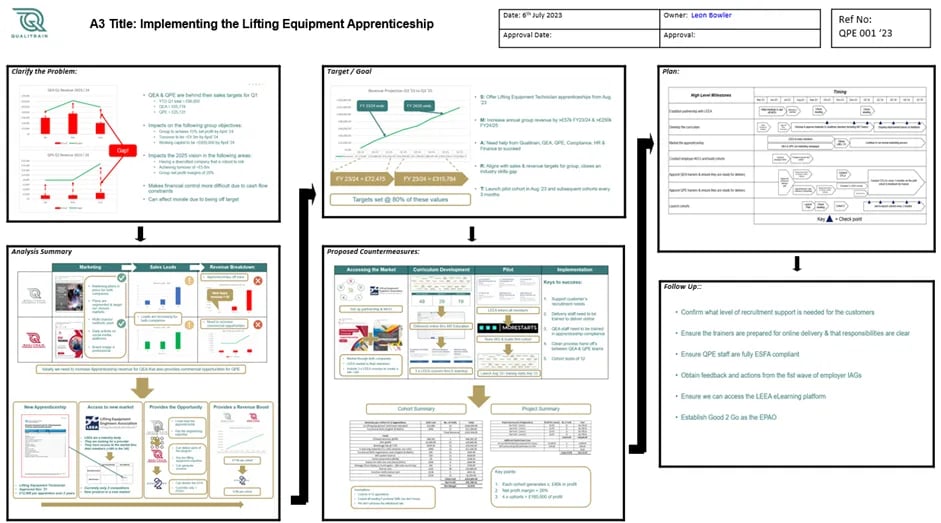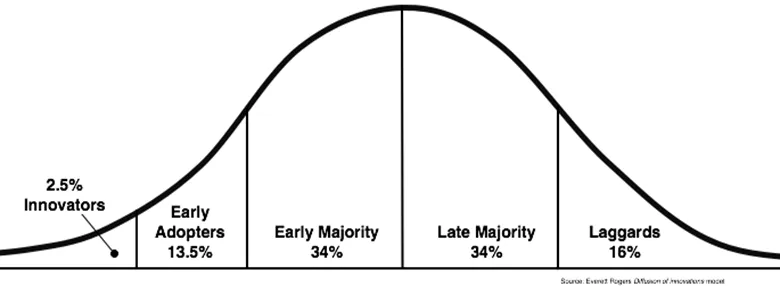A3 Improvement Tools summed up by industry best experts!

Welcome to this week’s improvement blog where we aim to tackle some of the myths surrounding improvement tools and help others avoid some of the mistakes we’ve made in the past. Over the next few weeks, we will delve into improvement methodology known as the A3.
Since the late 90’s early 2000’s the A3 has been a popular improvement tool and has sometimes been incorrectly hailed as the tool to help solve all of our problems. For those not familiar with the method the name derives from the size of paper, (A3) that is commonly used to produce a report.
The A3 report provides a summary of our improvement work and should be supported by a narrative to help communicate the story and key points, but this is where the problems can begin. Whilst on the surface the A3 report is a great communication tool that helps standardise our approach to solving problems it doesn’t always communicate all of the hard work & leadership practice that glued the team together to ensure a problem was successfully solved. In fact, it often hides these crucial activities and can lead people to believe that the A3 method is nothing more than an administrative activity, which completely misses the point, and a somewhat rudimentary understanding is all that remains. This results in people being motivated away from using A3’s and cries of “I’m not doing one of them every time I have a problem”. The number of times I’ve heard managers from very large organisations say, “My boss has told me I’ve got to do an A3” every time they report a problem which still astounds me, and my reply is often “I don’t know what you mean?”. Sometimes I fear the A3 method is going the way of the 8D report where sometimes the objective becomes just to complete the report itself to get your boss off your back instead of a standardise business practice that enables real teamwork, helping people to think for themselves and develop their problem solving capability.
The benefits of using A3
There are many benefits to using the A3 method but unfortunately some of the most important ones are lost until you actually do it yourself, so I’ll try and help by listing all of the benefits I’ve personally experienced, which are as follows:
- It saves time. No more writing long management reports that no one reads, or if they do pay you the courtesy of reading it, they soon forget. Also, you will permanently solve problems faster. To the untrained eye it can initially look slower but once you’ve start to become proficient, you’ll be solving complex problems in days, where others are still taking months, or they actually don’t solve the problem at all for it to return at a later date when everyone has forgotten
- Standardises the approach to problem solving. Have you ever worked in a business where every leader uses their way to solve a problem? Then you must follow their way! This soon becomes confusing and often, the problems return
- They foster and sometimes force teamwork. You soon learn that you cannot successfully solve the types of problem that A3 addresses on your own. You need the help of your team
- You can easily share learning with a good A3 and even leverage the gains by quickly adopting the better way in other areas of the business, thus amplifying both the organisational learning and associated benefits
- You can use A3’s to come back to in the future for reference instead of good work being reliant on memory. You can even use the results for further internal or external benchmarking.
- It will vastly improve your communication skills. A3 requires you to think hard about how you will visualise and communicate your improvement work, which in turn teaches you to communicate with brevity. You will also find that your story is consistent which vastly reduces the opportunity for misunderstandings
- The process will challenge your thinking and current preconceptions. You will become better at organising your thoughts, and in turn the action that you take will be more efficient and effective
- Reduces anxiety and stress levels. When proficient you will be able to solve a range of problems quickly. You will gain confidence and have a problem solving method that is both flexible and scalable, which reduces the reliance or learning or needing to use other problem solving methods. In short, it just makes things easier no matter how what comes your way
When to use A3
There are many situations where using A3 methodology is applicable and some when it is not. The most obvious time to not use A3 is when you find yourself in a “just do it” situation which is usually encountered when you are trying to establish basic process stability due to a lack of standards or technical skills. Usually, you will use the A3 method when addressing the following types of problem:
- Dealing with a chronic or reoccurring problem – also known as a “gap to target” problem
- Breaking through to new levels of performance – also known as a “setting” problem
A gap to target type problem would typically be where there is an established standard of performance but you’re consistently missing the target and the trend is looking like it’s going the wrong way. Examples of this might be scrap levels, the number of customer complaints or sales revenue.
A setting or breakthrough type of problem is typically where you’re moving into the unknown, aiming to achieve levels of performance that have never been achieved before or which are recognised as world class. This type of problem requires a lot of research and benchmarking.
The common types of A3
As you can imagine there are standardised types of A3 that are associated each type of problem, these are as follows:
- Practical Problem Solving (PPS): You will use this type when solving “gap to target” type problems
- Strategy A3 (sometimes just called A3): You will use this type when solving breakthrough type problems
- Status or results A3: This is just a status update which can be used for either PPS or strategy A3’s. You would typically use this when your A3 takes several months to complete
Well that’s enough for this episode. Next time we will begin to look at each of the types of A3 in more detail, starting with Practical Problem Solving.
Thanks for your time and see you in the next episode…
Leon
Share this
You May Also Like
These Related Stories

How to Influence Improvement in Your Team

Understanding the Need for Continuous Improvement


No Comments Yet
Let us know what you think